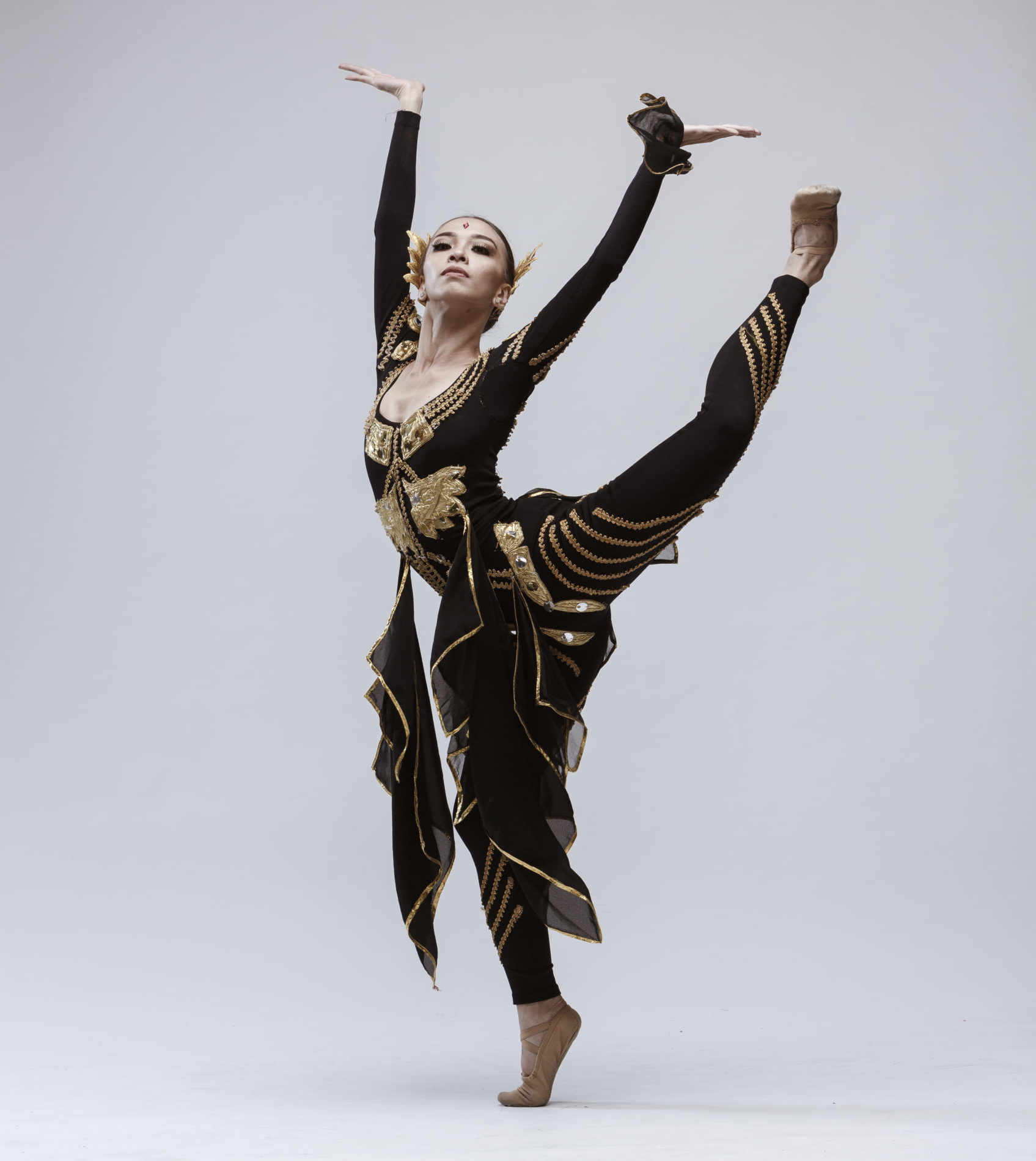
The succession of artistic direction in Ballet Philippines (BP) is still a hotly contested issue as the term of its founder and National Artist for Dance, Alice Reyes, ends this week (March 31).
Amid the imbroglio, Reyes has kept her nose to the grindstone while preparing the company for “Rama Hari” (canceled due to the quarantine). Her adaptation of the Indian epic Ramayana incorporates Asian theatrical elements. The season-ender boasted of the collaboration with composer Ryan Cayabyab, librettist Bienvenido Lumbera and the late designer Salvador Bernal, all of whom later became National Artists.
The eight shows were supposed to be accompanied by the ABS-CBN Philharmonic Orchestra. Ronelson Yadao and Victor Maguad should have played Rama while Monica Gana and Jemima Reyes, the bride Sita. Singers included prominent theater artists Aicelle Santos, Audie Gemora and Sheila Valderrama.
The lyrical Denise Parungao was cast in a comic role as Soorphanaka, the sister of villain, Ravana, who kidnaps Sita. “I challenge dancers for taking on roles that they don’t think they can do,” said Reyes.
Asked the high points of her stint as artistic director, she replied, “We were able to mount pieces in the company repertoire that have not been done in a long time. It’s difficult to mount an old work. The repertoire is international in level but Filipino in essence.”
The revivals included Reyes’ “Carmina Burana” with live orchestra and the Madrigal Singers; “Amada” which was based on Nick Joaquin’s novel, the reverential “Chichester Psalms” and the first Filipino rock opera ballet “Tales of the Manuvu.” “Bungkos Suite,” set to Filipino songs, was infused with Reyes’ training with the Bayanihan Dance Company.
Moreover, an important highlight of BP’s golden year was the launch of its coffee-table book. “Alice Reyes & Ballet Philippines: A 50-year Legacy in Dance” was a project led by former BP president and now Cultural Center of the Philippines (CCP) chair Margie Moran. Edited by Elizabeth Reyes, the book chronicles how one visionary built a professional company that merited international admiration. Reyes’ impact spawned artistic collaborations, choreographers, world-class performers and alumni who have set up schools and trained the new generation of dancers. Pleased with the rehearsals, she said, “I’m the choreographer. I allow it. This generation is interpreting my work beautifully. It’s the same work with a new thrust. What’s wrong with that? What matters is that the story is being told. Are you gripped by the drama?” She likewise lauded the dancers for their diligence. “You don’t have to tell this batch what to do. They take on the rehearsals themselves. It’s very moving,” she said.
As to her plans after her term, Reyes expressed her desire to travel around the country to see the state of dance and give talks. She wants to help the National Commission for Culture and the Arts and the CCP. “It’s to make sure there are more theaters. There is only the CCP, Silliman University in Dumaguete and Cagayan de Oro. Cebu has none,” she observed.
Then there’s her thriving export company, Chrysara, which is known for antique-looking decorative arts.
Whether she’s running BP or her management company, her management style is to empower people.
Chrysara could operate without her looking over their shoulders. “I know what’s happening. There is open communication. In empowering people, there is accountability. You teach them responsibility,” she said. While other export companies closed down due to dwindling demand, Chrysara’s sales have been flourishing. “When people from the export business ask what’s my secret, I say, ‘I should listen to you.’ I’m from dance and theater. Everything is a partnership. Communication is important. You have to breathe together. Dance and business share the same principles—going for excellence. Customer service starts from inside. It’s not that you are nice to Americans and bastos (rude) to Filipinos,” she explained.
The comment was an innuendo on the board’s lack of communication skills in the hiring of her successor. It also alluded to how it had given BP associate artistic directors Adam Sage and Ronelson Yadao—her choices for artistic director—short notice to prepare for the job interview.
Was she ever bothered by people describing her as the iron fist behind the velvet glove?
“At some point, I would sign my name ‘Alicia Mondragon’ as they would call me,” she said with a laugh. —CONTRIBUTED INQ